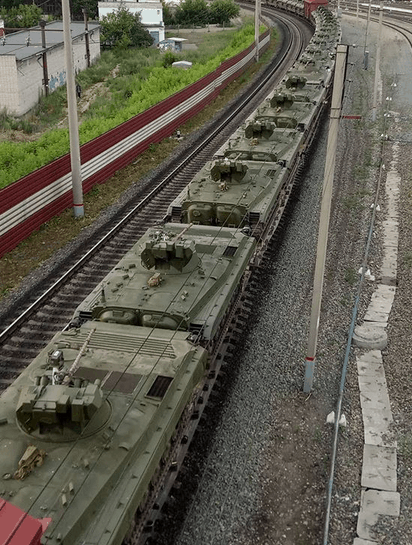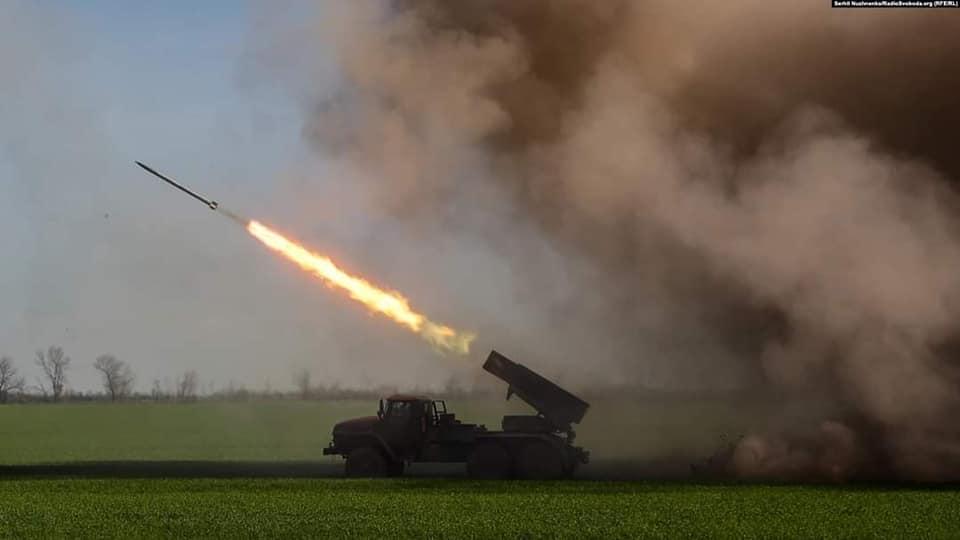Against this backdrop, the upcoming Caucasus 2020 strategic command and staff drills planned by Russia for September raised a new wave of concerns. Experts of the Maritime Expert Platform association claim there is a risk of Russian provocations during the Caucasus 2020 drills. The same claim was made by a representative of the Main Intelligence Directorate of the Ministry of Defense of Ukraine, Vadym Skibitsky, and the commander of the Ukrainian naval forces, Oleksiy Neyizhpapa.
At the same time, the majority of Ukrainian military experts say that, despite Russia's saber-rattling around Ukraine and a probability of small provocations, a large-scale offensive would cost Russia too many human lives and resources. Therefore, Russia's main tactic will be not a direct offensive like in 2014 but creating internal chaos in Ukraine, which is the main precondition for further aggression.
Russia continues strengthening its military around Ukraine despite coronavirus lockdown and economic crisis
On 9 January 2020, unprecedentedly large-scale joint missile-firing exercises involving the Russian Black Sea and Northern Fleets were conducted with missile launches from the sea, air, and shore.
“For the first time since Soviet times (!), we saw such a huge naval group of the Russian Federation in the Black Sea exercise – about 40 ships, a submarine, and over 40 planes and helicopters of different types participated in the exercise,” experts from the Maritime Expert Platform association claim.
They also note that NATO has reduced the number of visits of its ships to the Black Sea due to the lockdown. There were 13 ships during the first 5 months of 2019, and only 5 ships in 2020. Russia from its side not only has not canceled training but is holding them at a larger scale.
In 2020, further actions by the Russian Federation aimed at obstructing the navigation to Ukrainian ports may happen, according to the Maritime Expert Platform association. While Putin's approval ratings are falling and the economic crisis affects Russia, a "small victorious war" in the Black Sea would be beneficial for the Russian president.
Vadym Skibitsky from the Main Intelligence Directorate of the Ministry of Defense of Ukraine, says
Russia may resort to provocative actions during the upcoming Caucasus 2020 strategic command and staff drills to be held in September. Some of the drills will be conducted in areas bordering Ukraine, namely at the Kadamovsky and Kuzminsky training grounds, and in occupied Crimea.
Former US Army Commander in Europe Ben Hodges does not rule out this possibility:
"Significant Russian military along Ukrainian border… why? Ukraine is not going to attack Russia. We need to watch this closely, especially with water shortages in Crimea, Russian claims of humanitarian crisis, US distracted, and KAVKAZ 20 [military training] in September."
A similar view was expressed by Glen Howard, President of the Jamestown Foundation, during an online conference regarding the situation in the Black Sea region. He believes that the dry summer in Crimea could encourage Russians to take action in the Kherson region to gain control of the North Crimean canal and provide water to the region where they can announce a “humanitarian crisis” and say they had no alternatives from where to take water.
Finally, the commander of the Ukrainian naval forces, Oleksiy Neyizhpapa, has confirmed that there is a risk of Russian aggression in the Kherson region and that “we are preparing”:
"I do not rule out such actions by the Russian Empire. We are preparing. I cannot tell you everything, but here is a small fact. The range of the Neptune missile system allows it to be used from mainland Ukraine against ships near Sevastopol in Crimea. Let’s see."
Russians deny such intentions, claiming “Russia is a peaceful state.” First Deputy Chairman of the State Duma Committee on Defense Andrei Krasov said that “Russia is not preparing for war to capture any territories.” According to him, Russia welcomes "good relations with neighbors" and expected that normalization should have taken place with the new president of Ukraine, but "unfortunately, this is not happening."

[highlight]However, the deployment of the Russian military around Ukraine demonstrates the opposite. [/highlight]
He also informed that the number of ground troops of the Russian Armed Forces along the border with Ukraine is about 87,000 servicemen, up to 1100 tanks, up to 2600 armored combat vehicles, up to 1100 artillery systems, up to 360 rocket systems of volley fire, and 18 operational and tactical missile systems.

In total, Russia has deployed 28 battalion-tactical groups (BTGs), each of about 2,000 soldiers and other additional troops, along the Ukrainian border.
Strengths and weaknesses of Ukraine
Although Russia increasingly flexes its muscles and there is a growing risk of provocation, Ukrainian military experts generally agree that Russia won’t attack head-on under current circumstances. What Russia really relies on is inner destabilization in Ukraine and subsequent intervention when the state is in a position of weakness, as was the case in 2014. Direct aggression right now may cost Russia too many lives and money.
The range of the Neptune missile system, mentioned by Neyizhpapa, indeed allows Ukraine to cause significant damage to the Russian navy before it reaches Ukrainian shores. Unlike in 2014, Ukraine has installed air defense systems throughout the country, and military personnel has enough means to effectively fight today.
Ukrainian missile complex Neptun [embedyt] https://www.youtube.com/watch?v=61DAdH9WyDs[/embedyt]
Ukrainian missile complex Vilha-m [embedyt] https://www.youtube.com/watch?v=jNrVVN8oJmw[/embedyt]
Oleksiy Arestovych
, a Ukrainian military expert, says that what Russia needs are concessions from Zelenskyy, in particular regarding water for Crimea. To achieve this, military blackmail or even a small hybrid operation may be conducted to win the necessary agreement from the Ukrainian side. However, a full-scale military invasion would be too risky for Russia and, therefore, unlikely:
"The Russian army does not have decisive superiority over [Ukraine's]. It has superiority in quality and in numbers, but not a definitive one. This means that Russia's success is not guaranteed [in case of a full-scale invasion], and given some circumstances (special relations between Ukraine and NATO, military experience [of Ukrainian soldiers], patriotic upsurge), Russia may ultimately fail. This means that Russian generals will have to draw up and implement very complex plans. In particular, a comprehensive air-ground offensive operation, with very high requirements for interaction, coordination, decisiveness and accuracy of actions. And [Ukrainian] generals, in order to disrupt their plan, or even go on the counter-offensive, will need to implement only a conservative defense strategy, not grab the stars from heaven..."
Also, Ukrainian former Head of Security and Defense Council Oleksandr Turchynov stresses that Putin is not a hero who is ready to openly fight with his rivals. Russia rather uses hybrid tactics and attacks when its enemy appears internally weak and destabilized, not capable of defending itself from external enemies. That is what Russia is now trying to achieve in Ukraine and what Ukrainian politicians and civil activists should oppose:
"Chaos and an uncontrolled situation in Ukraine may create the preconditions for an attack of Russian troops on Kherson. Putin needs a situation in Ukraine, as in late 2013 - early 2014, when there was anarchy. Today, when we see that the crisis and volatility of the situation in Ukraine are intensifying, this may be a prerequisite for military aggression."
Read also:
- What we know about Russia’s active duty soldiers captured in eastern Ukraine from 2014
- Ukraine detains deep cover GRU sleeper agent who might be highest ranking MH17 witness yet
- Propagandists invent cover-up for Russian army electronic warfare equipment in eastern Ukraine
- Ukrainian espionage incident highlights ongoing Russian naval shortcomings
- The hidden invasion: Russia’s military convoys to Ukraine since 2014
- More evidence of Russia’s aggression against Ukraine discovered by digital sleuth as Russia keeps denying its involvement
- What we know about Russian troops in eastern Ukraine
- Russian electronic warfare in Donbas: Training or preparation for a wider attack?




